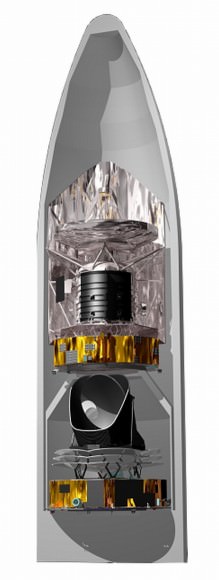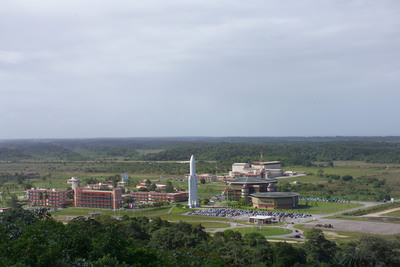[/caption]
The launch of the Herschel and Planck spacecraft has been delayed from the original launch date of April 16. Right now, officials from the European Space Agency and Arianspace say the liftoff date will be delayed by a few weeks in order to carry out additional checks on the ground segment of the Herschel and Planck programs. Recent software updates for spacecraft operation procedures need to be validated. A new launch date will be announced at the end of March, but officials are hoping for time frame around April 29.

Planck is designed to image the anisotropies of the Cosmic Background Radiation Field over the whole sky, with unprecedented sensitivity and angular resolution. It will provide a major source of information relevant to several cosmological and astrophysical issues, such as testing theories of the early universe and the origin of cosmic structure.
The Herschel Space Observatory (formerly called Far Infrared and Sub-millimetre Telescope or FIRST) has the largest single mirror ever built for a space telescope. At 3.5-meters in diameter the mirror will collect long-wavelength radiation from some of the coldest and most distant objects in the Universe. In addition, Herschel will be the only space observatory to cover a spectral range from the far infrared to sub-millimeter.
During the delay, preparation of the two spacecraft for launch continues as planned at Europe’s Spaceport in Kourou, French Guiana.
Source: ESA


*headdesk*
I always consider it a miracle when observatories actually DO get launched…
At least Kepler is up and launched a bit earlier than one interim launch date.
Wow, 3.5 m. Kepler has just 1 m.
If the launch failed, that would be a double-fail! :d
TPF and Darwin will have about 4 times Hubble resp. 3 times 3 m. How much is needed to be able to see continents on an exoearth?
Indeed, it would be a catastrophe if this launch failed… both are awesome missions (and expensive, without doubt). Being interested in cosmology I’m really looking forward to Planck, it’s so much better still, than WMAP. Just what our poor data-deprived theoretical cosmologist friends need to test their ideas 🙂
Now these are SEXY craft – if you enjoy substance over style, that is. Unlike that damn GOCE spacecraft. It gets all the girls while I… ahem. I digress…
Can’t wait for the data to start coming through!
After that last remark, Astrofiend, you are
considered a GOCE buster.